Read this article in Spanish
Transportation networks are the circulatory system of any city, and the Metro de Caracas is one of the main arteries keeping Venezuela’s capital alive. Known in its prime as one of the most modern subway systems in Latin America, its network of tunnels, tracks, and stations carries an average of 800,000 people every day—breaking down social and economic barriers under the shared banner of progress.
In the early 2000s, the Caracas Metro laid out an ambitious expansion plan aimed at connecting more areas to meet the needs of a rapidly growing population. The city had already begun to stretch beyond the borders of its traditional metropolitan area into satellite towns in Miranda state, where thousands needed access to the city center and its eastern districts.
The government of Hugo Chávez promised new trains, additional lines, and rail systems that would link Caracas to its surrounding cities. But between corruption scandals and logistical setbacks, many of these projects were delayed and eventually handed over to his successor, Nicolás Maduro. Today, most of them remain unfinished.
This series by El Diario takes a closer look at the current state of transportation and mobility in Caracas, beginning with the Metro—a system once seen as the great equalizer that could unite the city beyond its fragmented geography, but whose vision now lies dormant among abandoned lots and faded billboards.
The Forgotten Line
On November 3, 2006, then-President Hugo Chávez announced the construction of Line 5 of the Caracas Metro, which would include stations in eastern districts such as Bello Monte, Las Mercedes, Tamanaco, Chuao, Bello Campo, and Parque del Este (now called Parque Miranda)—areas known for being relatively affluent or middle-class enclaves. At the time, Chávez approved an initial $80 million investment for the project, drawn from Venezuela’s National Development Fund (Fonden), a state-run entity created to channel oil revenues into infrastructure and social programs.
Later, the plan expanded eastward toward the border with Miranda state, adding stations in neighborhoods such as Montecristo, Boleíta, El Marqués, and Warairarepano—bringing the total to 10. With characteristic bravado, Chávez predicted the new route would be completed by 2011, aligning with the bicentennial of Venezuela’s Declaration of Independence, as well as the expected rollout of other major transit projects like Line 2 of the Los Teques Metro and the Guarenas-Guatire Metro.
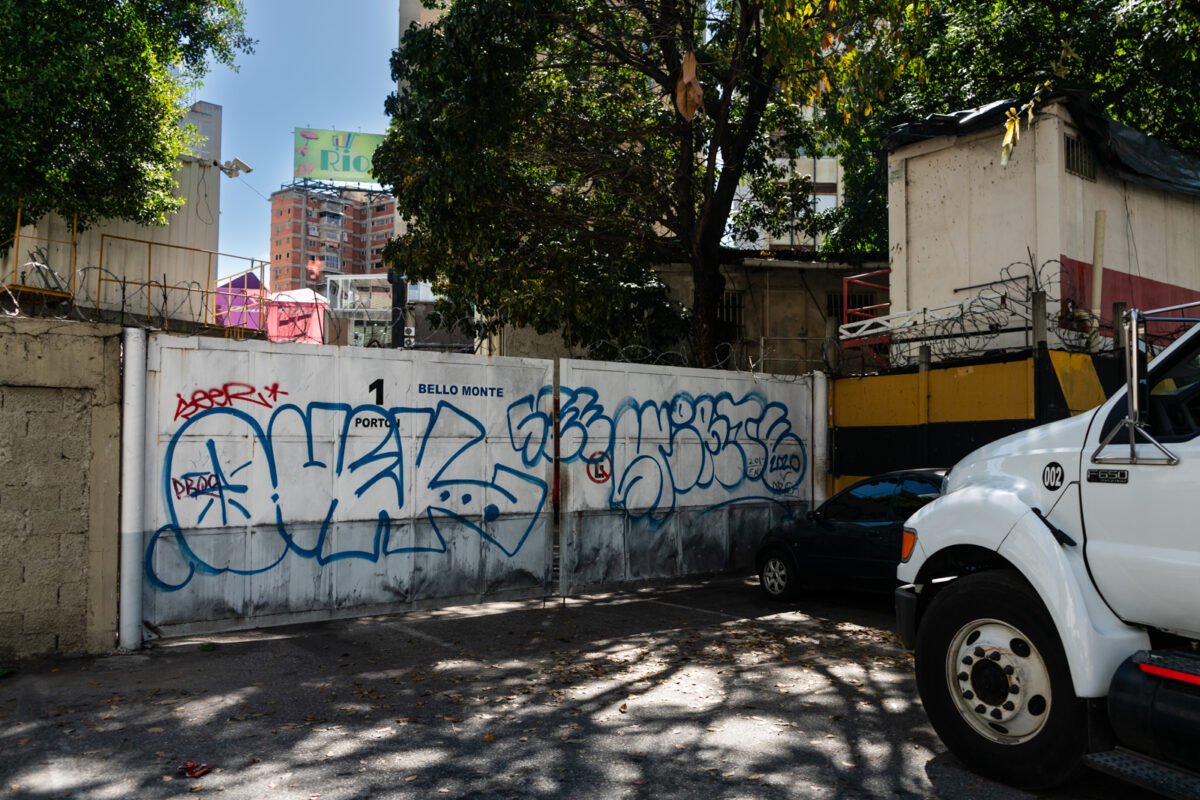
Eighteen years have passed since that announcement—and fourteen since the line was originally scheduled to open—but the outcome has fallen far short of expectations. A field visit by El Diario to the proposed station sites revealed that only one of them, Bello Monte, has been built. That station was inaugurated on November 4, 2015, during the presidency of Nicolás Maduro.
Even so, Bello Monte station opened without being fully operational. Only one platform is in service, receiving trains from Zona Rental—a central transit hub near Plaza Venezuela and the main campus of the Central University of Venezuela—that often stop for more than ten minutes before heading back toward Line 4. Outside the station’s lone entrance stands a walled-off lot, where an eco-friendly garden had once been planned.
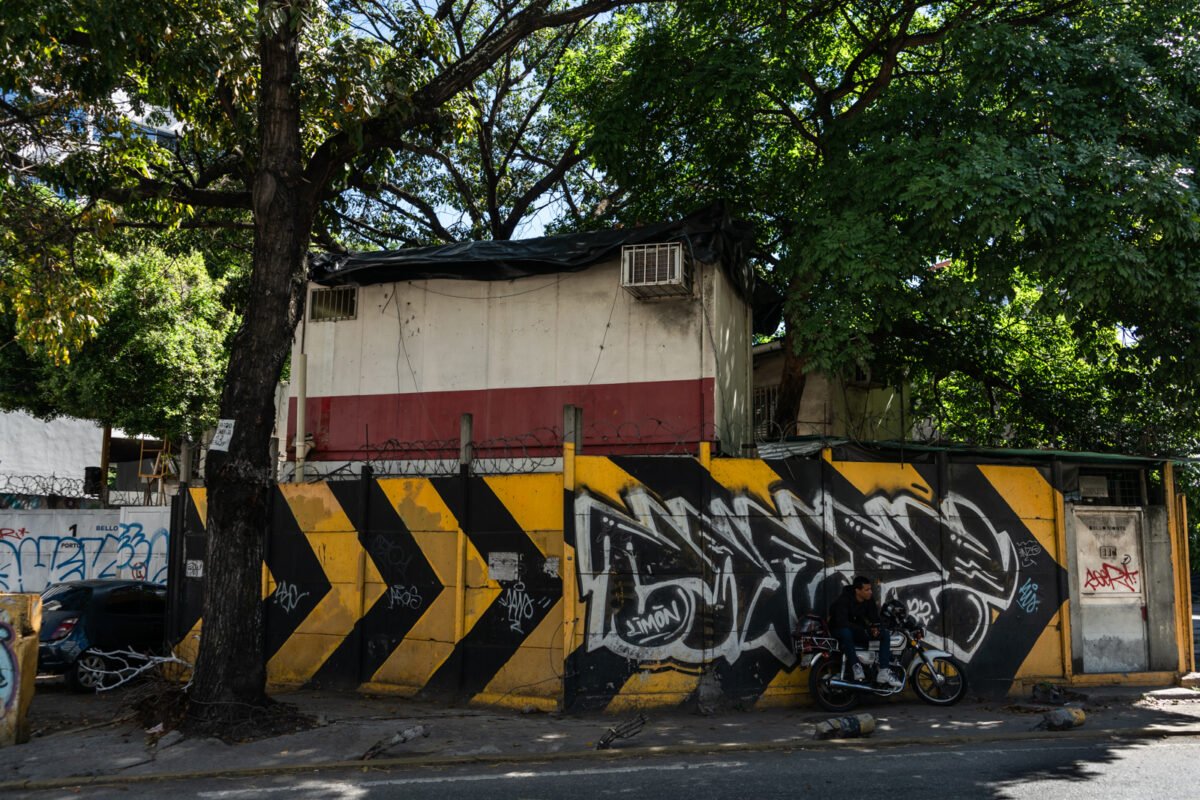
One of the entrances, located behind the former Baruta City Hall and the Centro Polo shopping complex in Baruta—a municipality of Miranda state that forms part of the greater Caracas metropolitan area—still bears traces of its original contractor, Odebrecht, a Brazilian construction giant deeply implicated in corruption scandals across Latin America. Though its name has been painted over, aerial views show an empty lot with only a few trucks and a power generator. Yet on the ground, the site remains active, with vehicles and personnel visibly moving in and out.
As part of the broader Metro Plan, Maduro’s government launched repair and renovation projects at various stations, including Bello Monte. In 2022, Edison Alvarado, head of the pro-government Metro workers’ union Sitrameca, announced that the second platform was under construction, along with 200 meters of tunnel extending from Bello Monte to Ciudad Tamanaco—an upscale commercial area in eastern Caracas. But today, the current status of the works is unknown, and it’s unclear whether they were ever completed.
Erased from the Map

After Bello Monte, Line 5 turns into a series of unfinished construction sites. The next planned stop was supposed to be Las Mercedes, one of Caracas’s most upscale neighborhoods, located on the main avenue just steps away from the Venezuelan-American Center (CVA in Spanish), a cultural and language institute. Today, a tower crane looms over the fenced-off plot, where piles of rusting beams lie covered in weeds.
When nearby shopkeepers are asked about activity at the site, they say a group of workers showed up around February to conduct some surveys, but no one knows what they were for. The station’s fate has been unclear ever since 2009, when the then-president of the Caracas Metro, Claudio Farías, announced plans to scrap it. He argued that the nearby Tamanaco station, also planned for the same avenue, made Las Mercedes redundant — and that building two stops in such an affluent area contradicted the original goal of serving the middle class.

“It’s a line that benefits the oligarchy. How can there be two stations in Las Mercedes? People who go to restaurants in that area drive there,” he told the press in June 2009 — using oligarchy in the Venezuelan political sense to refer to the wealthy elite.
Farías was replaced a week later by Víctor Hugo Matute, but the decision had already been made. Las Mercedes was erased from official Metro maps, and in its place, officials proposed building an administrative office tower. According to a 2012 investigation by El Universal, a Venezuelan newspaper, the Line 5 budget had already exceeded $3.9 billion, yet construction progress was only at 14.64% (though government officials claimed 30%).
It wasn’t until 2022 that Las Mercedes reappeared on official Metro maps—this time without much explanation. Tamanaco, however, remained part of the plan. The station would be located near the Paseo Las Mercedes shopping mall and the iconic Hotel Tamanaco. A tower crane still stands on the site as a reminder, and while walls marked “Authorized Personnel Only” block the view inside, there was no visible sign of activity.
Deep Pits, Deeper Delays
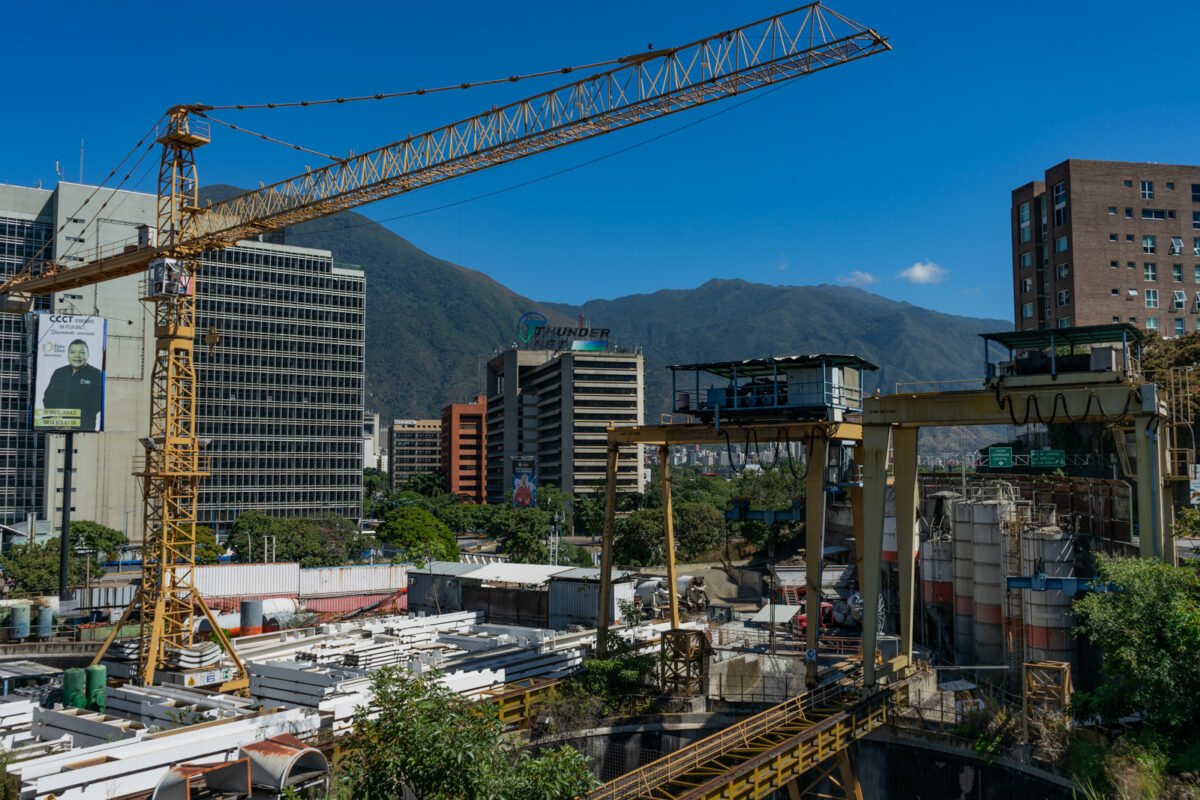
Another work that has remained frozen in Caracas’s landscape is the Chuao station. From the Cacique Guaicaipuro highway—Caracas’s main thoroughfare, formerly known as the Francisco Fajardo highway—you can clearly see the deep pits, over 20 meters (65 feet) deep, that were meant to lead down to the station platforms. These pits, located across from the Experimental University of the Armed Forces (Unefa), marked the starting point for the twin-tunnel construction of Line 5.
On July 28, 2010, then-Minister of Transport and Communications, Francisco Garcés, announced that the pits were ready to begin tunnel excavation, which would be carried out using two tunnel boring machines named Juana La Avanzadora and Manuela Sáenz. Work began in August, heading toward Bello Monte, where Juana La Avanzadora arrived in August 2011. Manuela Sáenz, however, stopped about 200 meters short of the goal. After the connection to Zona Rental was completed, the tunnel boring machine was brought back to the Unefa pit to dig another 3,195 meters (over 2 miles) of tunnel toward the future Miranda station.
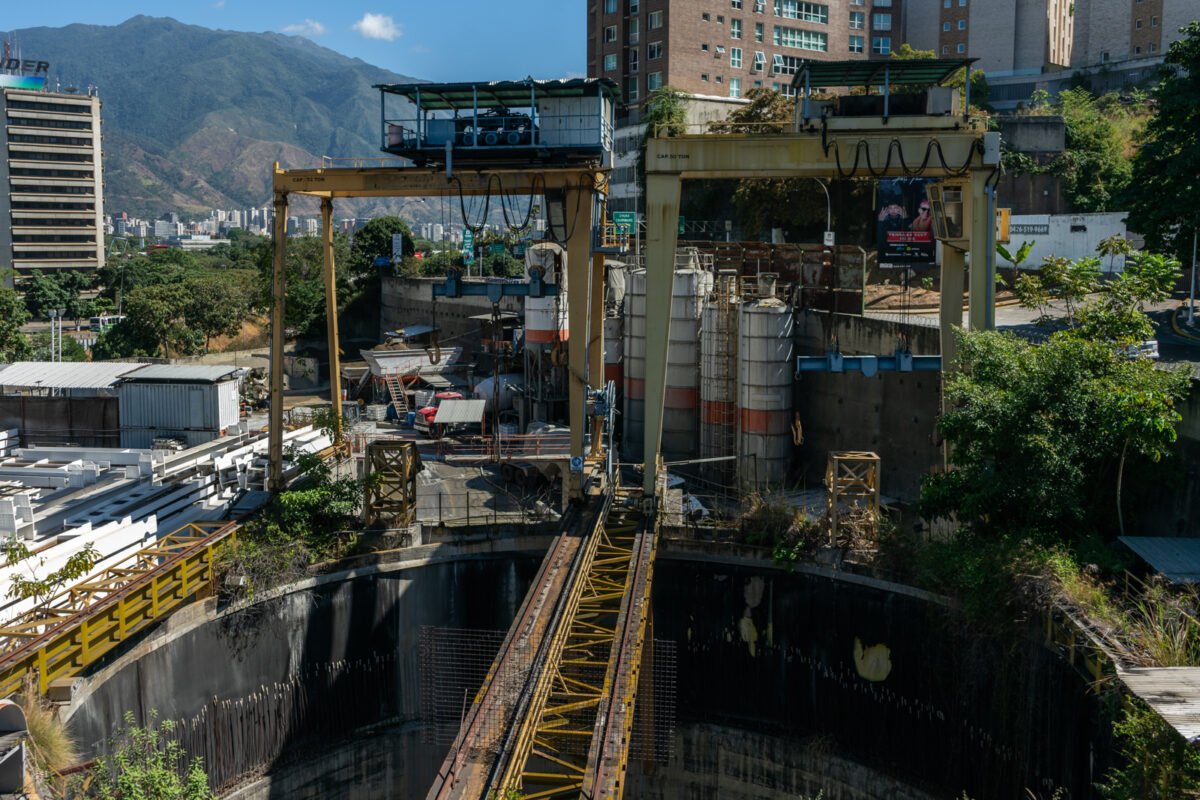
At that time, the president of the Metro was Haiman El Troudi. He admitted that the project—which should have already been completed, according to Chávez’s original timeline—had been delayed due to problems with the expropriation of land. He then set a new opening date for 2014 and stated that the project had reached 30% completion, with an investment of around $1.1 billion.
Following the route marked on the Metro map with the familiar “under construction” labels, the next stop is Bello Campo. Located next to the Gustavo Herrera high school, this station was also among those that Claudio Farías proposed eliminating in 2009, arguing it “wouldn’t benefit anyone.” Unlike Las Mercedes, though, it remained in the plan. Today, all that can be seen are the overgrown grasses and piles of unused construction materials on both sides of Libertador Avenue.
In October 2013, the tunnel boring machine Juana La Avanzadora completed its journey from Chuao to the station originally named Miranda II, later renamed Hugo Chávez in honor of the late president who died that year without seeing the project completed. Although the tunnel system was finished, El Troudi—now serving as Minister of Ground Transport—once again postponed the opening date, this time to 2016, explaining that the stations themselves still needed to be built over each excavation site.
The Master Plan

Since its establishment in 1977, the Caracas Metro had already outlined which areas of the city it would eventually serve, as part of the vision led by then-president José González-Lander. By 1997, Line 3 had been built from Plaza Venezuela—a central hub in Caracas—to El Valle, a predominantly residential neighborhood in the south-central part of the city. González-Lander then introduced what he called the “Caracas 2010 Plan,” also known as the Master Plan, presenting his vision for the future of urban mobility in the capital.
The Master Plan included the extension of Line 3 to La Rinconada, an area situated close to El Valle that would connect with the IAFE railway—a key regional transit link. It also proposed new lines such as Line 4, which was planned to run parallel to Line 2 from Las Adjuntas, located in the Caricuao region, to Parque del Este, an upscale district on the eastern edge of Caracas. Line 5, meanwhile, was intended to branch out from Tamanaco and Chuao to serve neighborhoods like El Cafetal and El Hatillo, both known for their middle-to-upper-class residential character. Finally, Line 6 was envisioned to span the northern part of the city, stretching from Los Magallanes in Catia to La Urbina, with the aim of easing congestion on Line 1.
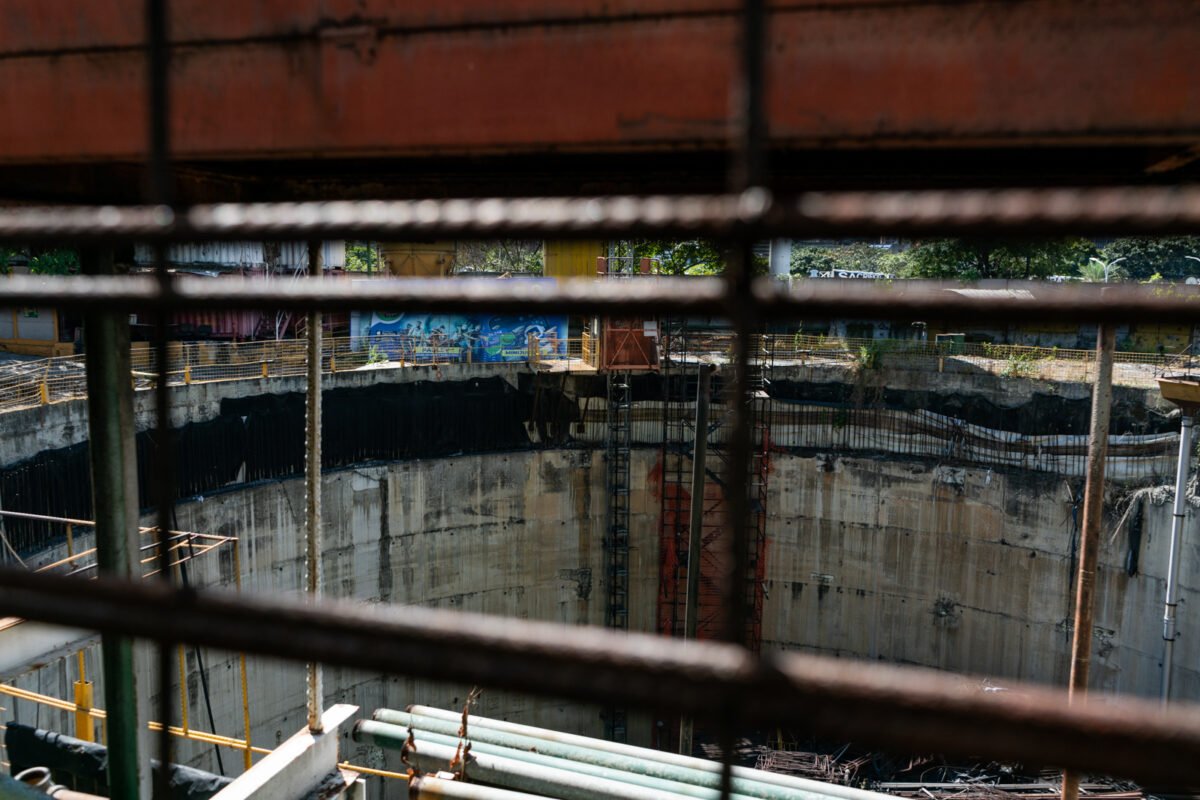
The proposal called for a complex network of more than 90 kilometers, divided among six lines and 70 stations, and even anticipated the capital’s demographic expansion by planning Metro extensions to neighboring cities such as Los Teques–San Antonio de los Altos and Guarenas–Guatire, both in Miranda state. Although González-Lander retired in 1997, Hugo Chávez’s government initially followed his blueprint closely, launching several construction projects in 2000.
As a result, Line 4—stretching from Capuchinos to Zona Rental—and El Tambor station on the Los Teques Metro (now renamed Alí Primera) opened in 2006. Similarly, between 2006 and 2010, Line 3 was completed according to the Master Plan. However, changes soon began to emerge: Line 5 was reconfigured to run from Bello Monte to La Urbina, abandoning its original route, and the entire plan to decongest the north of Caracas via Line 6 was scrapped; today, that line is represented only by an unfinished tunnel between Zoológico and La Rinconada.
The Cabletren
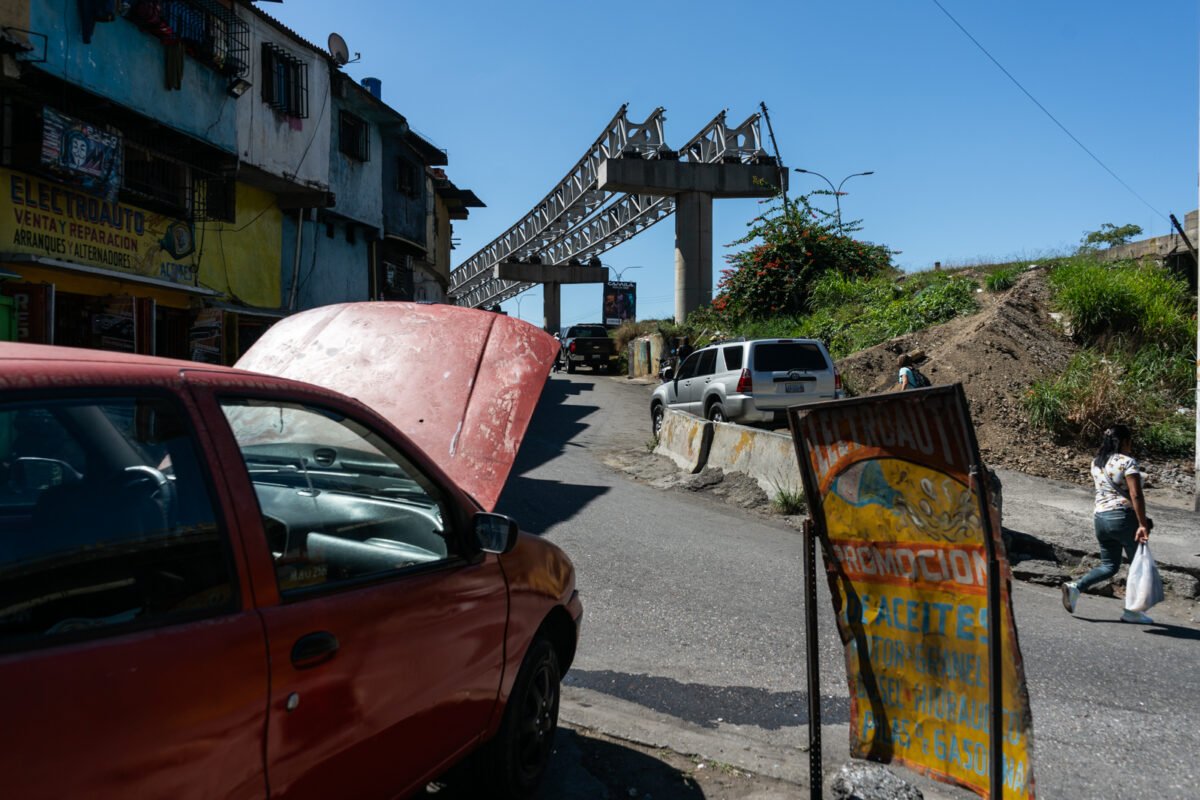
While most discussions revolve around Line 5, another major unfinished transit project cuts through Petare—once envisioned as a promise of mobility and progress, now left incomplete. It’s the Cabletren Bolivariano, a short-distance monorail system (technically, an Automated People Mover) designed to run along the edge of Caracas’s most populous neighborhood. It was intended not only to serve residents of Sucre municipality but also to become a transfer point between the second segment of Line 5 and the Guarenas–Guatire Metro.
Originally, the Cabletren wasn’t part of the transit blueprint. Its construction was approved following a proposal by the Austrian company Doppelmayr Cable Car, the same firm behind the Metrocable systems in San Agustín and Mariches. According to the investigative outlet Armando.info, the project was folded into Odebrecht’s MC-3753 contract, which also included stations from Montecristo to Warairarepano, as well as the Guarenas–Guatire Metro line.
An initial budget of $230 million was assigned to build five stations: Petare II, 19 de Abril, 5 de Julio, 24 de Julio, and Warairarepano. The last of these was meant to connect with the metro station of the same name, forming an intermodal terminal linking to the Guarenas–Guatire line. With just a one-year delay, the first three stations of the Cabletren opened on August 14, 2013. By then, the project’s cost had already ballooned to $450 million.
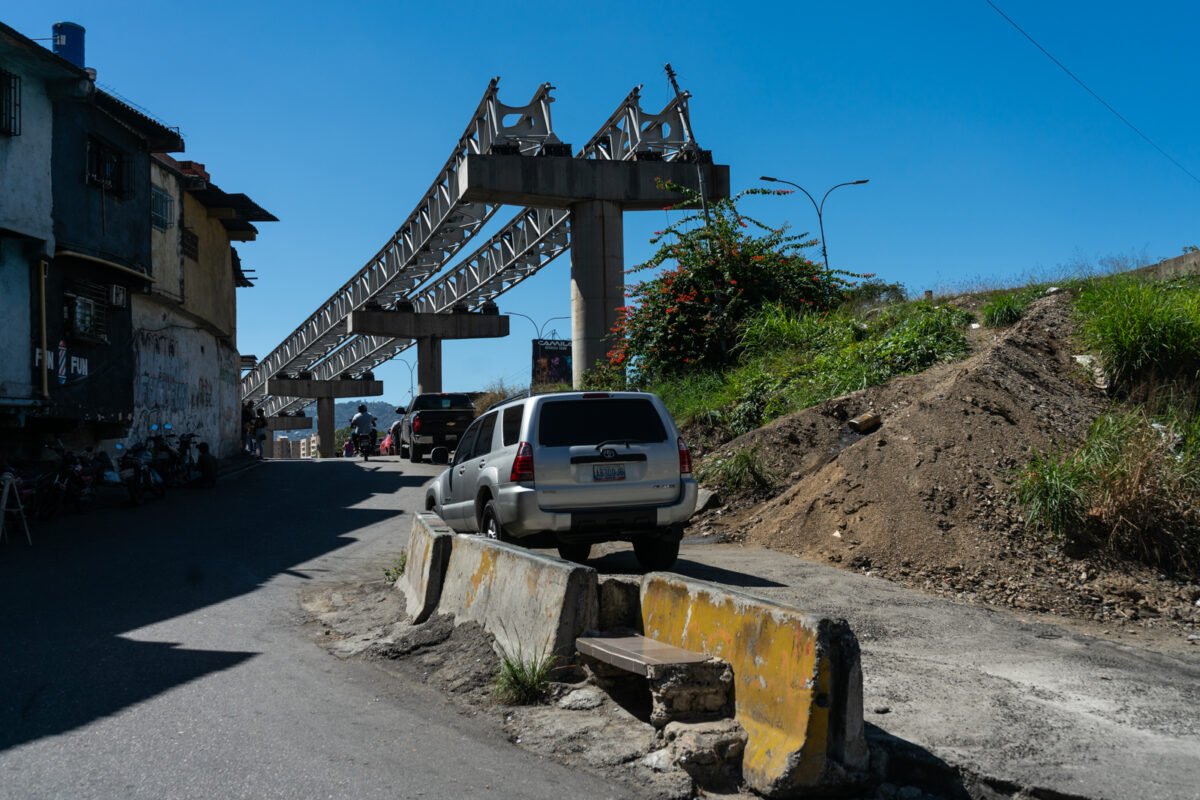
As for the other two stations, then-minister Haiman El Troudi had promised they would open in 2016, coinciding with the planned completion of Line 5. But as of 2025, they remain unfinished. During a recent visit by El Diario, reporters observed how the bright white rail ends abruptly by the highway, while a vacant lot occupies the space where the 24 de Julio station was supposed to rise. No trace of the much-anticipated intermodal terminal in La Urbina could be found.
In a makeshift repair shop built beneath the remains of the monorail, a resident from the 24 de Julio sector told El Diario that the Cabletren was “a disappointment.” Not only did it fail to solve the transportation issues for communities deeper within the barrio, but service interruptions are so frequent that locals often avoid using it altogether.
In Odebrecht’s Wake
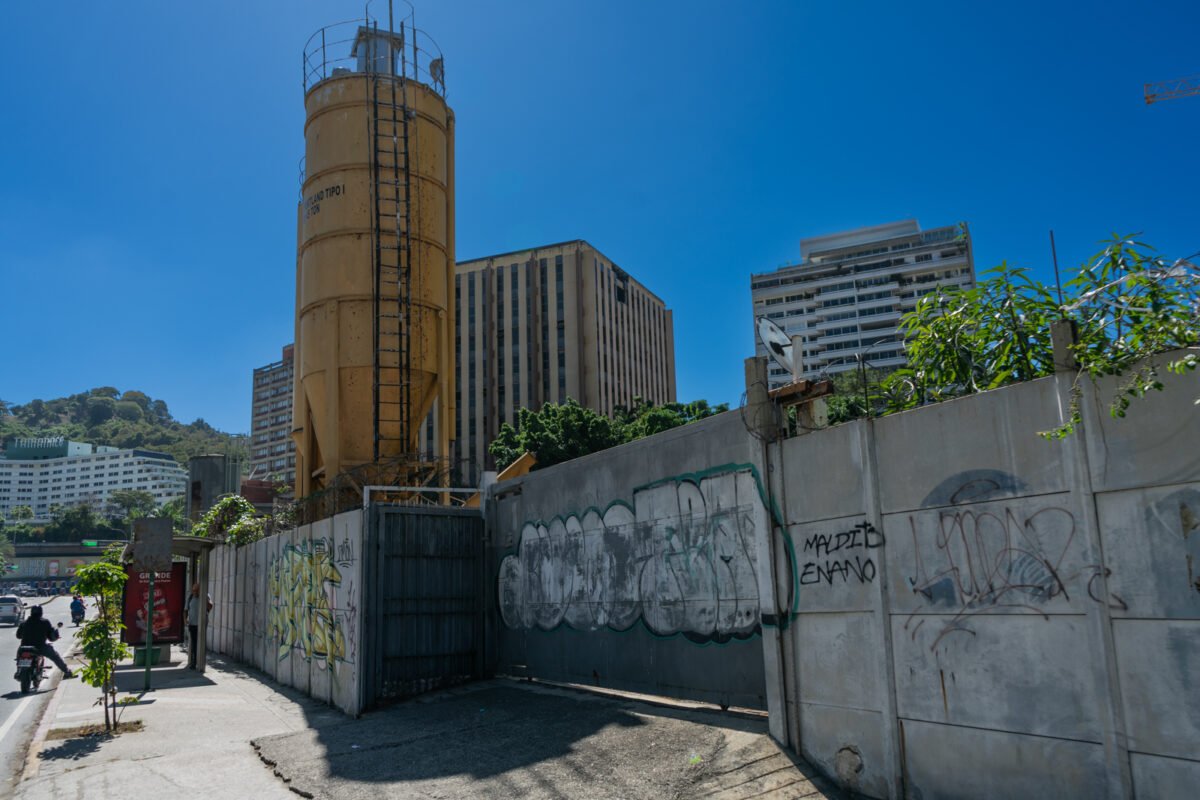
The common thread linking Line 5 of the Caracas Metro, the Cabletren Bolivariano, and other abandoned projects in Los Teques and Guarenas–Guatire is the Brazilian construction giant Odebrecht. According to the watchdog group Transparencia Venezuela, the Venezuelan state paid the company more than $5.9 billion just for Line 5—yet by the time its contract expired, the National Contractors Registry reported that only 54.15% of the work had been completed.
In 2014, Brazil launched Operation Car Wash (Operação Lava Jato), which exposed a massive network of bribery and money laundering that implicated Odebrecht. In March 2016, the company’s CEO Marcelo Odebrecht was arrested, sparking a wave of investigations across Latin America that uncovered corruption in over a dozen countries.
In Venezuela alone, Odebrecht admitted to the U.S. Department of Justice that it had paid approximately $98 million in bribes to public officials between 2006 and 2015 to secure overpriced public works contracts. The company also acknowledged having illegally financed the 2012 presidential campaigns of both Hugo Chávez and opposition candidate Henrique Capriles. In 2017, Venezuela’s National Assembly attempted to initiate impeachment proceedings against President Nicolás Maduro in connection with the scandal, but the effort had no consequences and the government never launched a serious investigation.
Instead, between 2017 and 2018, Maduro publicly called on his then-Vice President Tareck El Aissami (now imprisoned for corruption over a $21 billion embezzlement scheme involving Venezuela’s state oil company and the national crypto agency) to resume work on Odebrecht’s unfinished projects. Finally, in September 2019, Transportation Minister Hipólito Abreu announced the termination of the 17 remaining contracts with Odebrecht and the government’s takeover of the company’s 56 construction sites throughout the country.
From that point on, the unfinished Metro projects in Caracas and other cities officially became the government’s responsibility. In 2021, Maduro approved $17.5 million in funding to resume abandoned projects and an additional $18.6 million specifically for completing the Guarenas–Guatire Metro. However, it wasn’t until 2022 that the Caracas Metro publicly confirmed the resumption of work on Line 5—primarily to rehabilitate the tunnels between Tamanaco and Zona Rental. Three years have passed since, and hopes of seeing these projects fully realized continue to fade.
Translated by José Silva
La entrada Caracas on the Ground (I): The Unfinished Metro Projects se publicó primero en El Diario.













